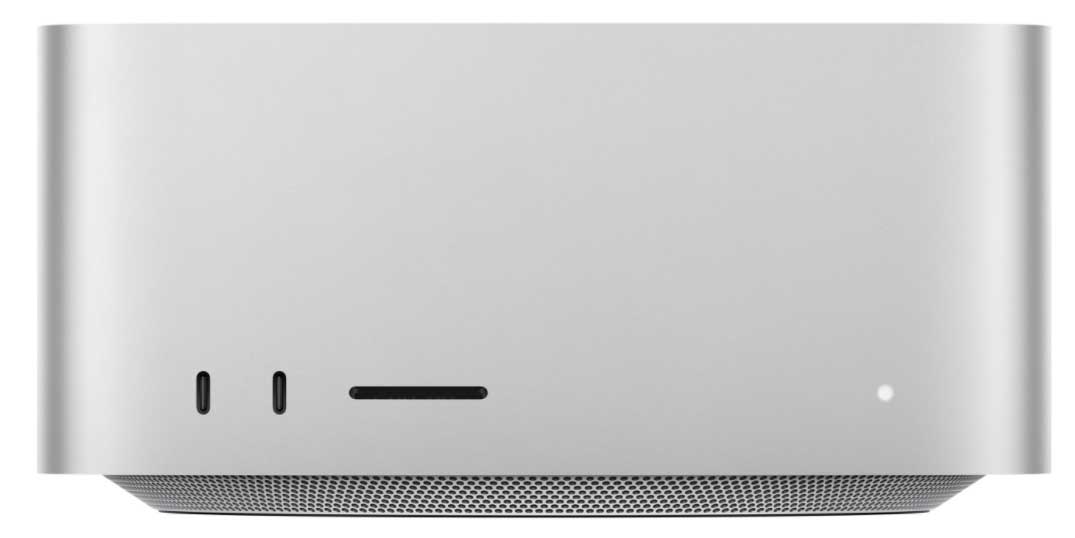Headlining the Peek Performance event held yesterday is a ridiculously powerful small-form-factor PC known as Mac Studio.
Designed to sit on a desk thanks to its 19.7cm width and depth and 9.5cm height, Mac Studio is available from March 18 in two configurations. The base specification costing £1,999 houses the company’s in-house M1 Max processor first seen in recent MacBook Pro high-performance laptops. Augmented with 32GB of RAM and 512GB SSD storage, performance ought to be handsome in most content creator applications.
The real star, however, is the all-new M1 Ultra. Effectively two M1 Pro chips connected via ‘UltraFusion’ packaging technology, this 114-billion transistor beast houses 20 CPU cores – 16 Performance and four Efficient – and either 48 or 64 GPU cores. Putting that into context, AMD’s most recent Ryzen 6000 Series mobile processor, codenamed Rembrandt, occupies a mere 13.1 billion transistors.
Apple is bullish enough to proclaim it as the “world’s most powerful chip for a personal computer.” Backing up this claim, M1 Ultra is said to offer “90 percent faster CPU performance than Mac Pro with 16-core Xeon processor.”
Laying down the smackdown some more, Apple also reckons M1 Ultra offers 90 per cent more performance than an Intel Core i9-12900K when both are capped at 60W.
Performance ought to scale linearly from M1 Max in heavily-threaded applications. Housed inside exactly the same aluminium chassis as the base model, Mac Studio M1 Ultra (48-core GPU) starts at £3,999 and doubles everything that matters from a performance perspective.

Underscoring how much Apple values M1 Ultra, specifying the 64-core GPU model adds an extra £1,000 to the price tag, while opting for 128GB of memory inflates cost by a further £800. In fact, ticking all the optional upgrades, including software, lifts pricing to an eye-watering £8,424.
That’s likely not the end of it, either, as Mac Studio supports five simultaneous displays – four Pro Display XDRs and additional 4K. Apple leaves few stones unturned in the quest for cutting-edge connectivity, too, with Mac Studio home to six Thunderbolt 4 ports, DisplayPort, HDMI, USB 4, 10GbE Ethernet, and Wi-Fi 6.
There are no discrete graphics because Apple reckons the 48- or 64-core M1 Ultra’s GPU is “up to 80 percent faster than the fastest Mac graphics card available today.”

The unique system of double-sided blowers, precisely placed airflow channels, and over 4,000 perforations on the back and bottom of the enclosure guide air through the internal components and help cool the high-performance chips, says Apple, enabling Mac Studio to be whisper quiet under prolonged load. A 370W maximum continuous power rating gives further insight into the raw power contained within.
“Mac Studio ushers in a new era for the desktop with unbelievable performance powered by M1 Max and M1 Ultra, an array of connectivity, and a compact design that puts everything users need within easy reach,” said Greg Joswiak, Apple’s senior vice president of Worldwide Marketing.
It’s scary to think a single chip can offer this level of CPU and GPU performance. Move over, Ryzen and Core.


